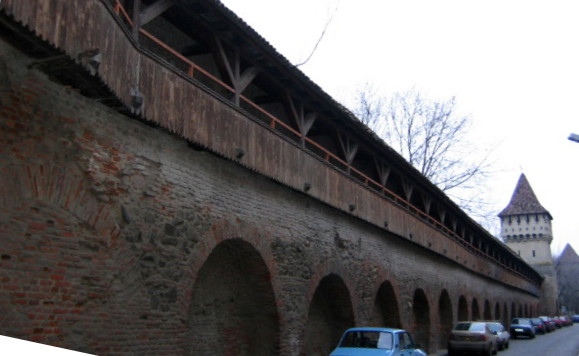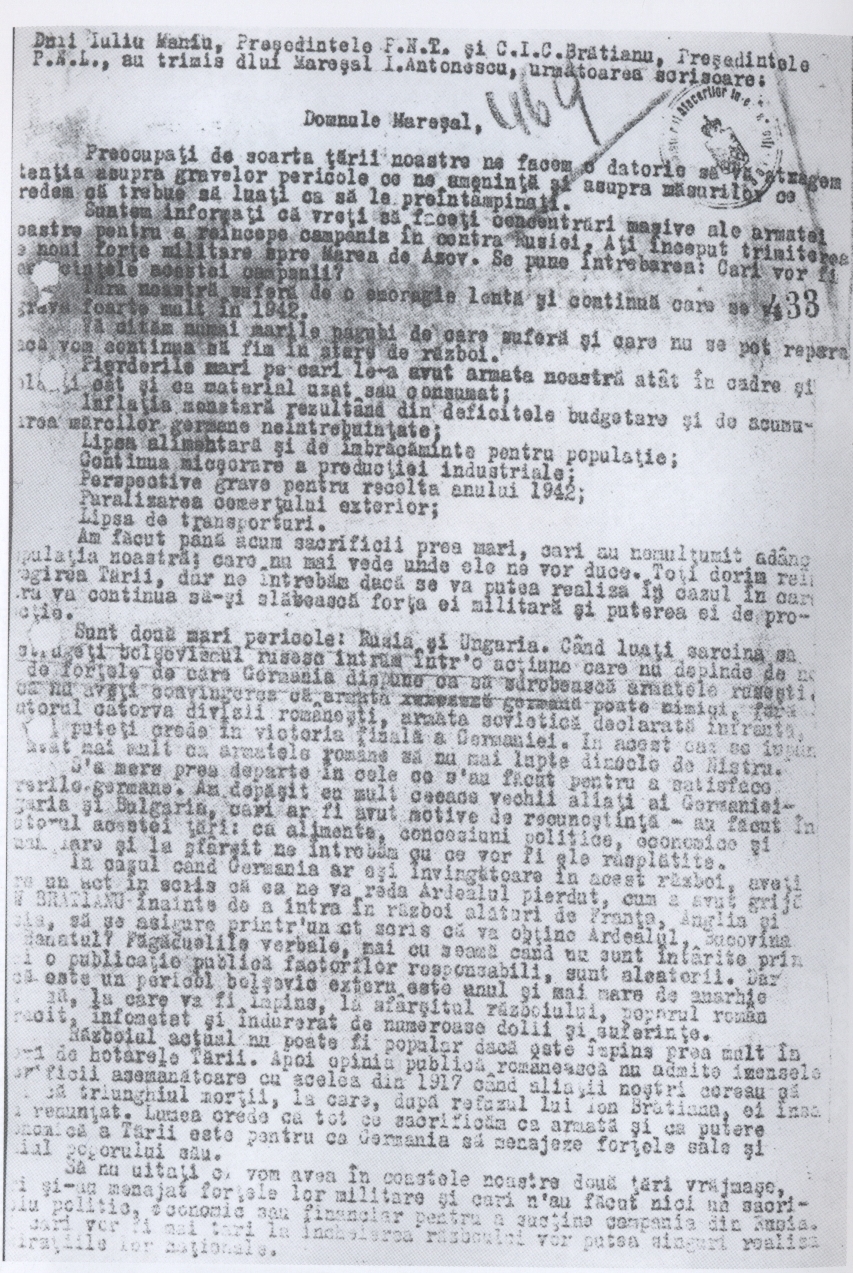|
Alexandru Vaida-Voevod
Alexandru Vaida-Voevod or Vaida-Voievod (27 February 1872 – 19 March 1950) was an Austro-Hungarian-born Romanian politician who was a supporter and promoter of the union of Transylvania (before 1920 part of Hungary) with the Romanian Old Kingdom. He later served as 28th Prime Minister of Romania. Transylvanian politics Vaida-Voevod was born to a Greek-Catholic family in the Transylvanian village of Alparét, Austria-Hungary (, today Bobâlna, Romania). He studied at the Lutheran Gymnasium in Bistrița. Initially, Voevod was supportive of a plan to federalize the domains of the Habsburgs along the lines of a '' United States of Greater Austria'', and was close to Archduke Franz Ferdinand. In 1906, Vaida-Voevod joined a group of Romanian nationalists in the Budapest Parliament (the Romanian National Party of Transylvania and Banat), becoming an important opponent of the Hungarian governmental policy of Magyarization, and fought for the right of Transylvania to self- ... [...More Info...] [...Related Items...] OR: [Wikipedia] [Google] [Baidu] |
Prime Minister Of Romania
The prime minister of Romania (), officially the prime minister of the Government of Romania (), is the head of the Government of Romania, Government of Romania. Initially, the office was styled ''President of the Council of Ministers'' (), when the term "Government" included more than the Cabinet, and the Cabinet was called the ''Council of Ministers'' (). The title was officially changed to ''Prime Minister'' by the 1965 Constitution of Romania during the Socialist Republic of Romania, communist regime. Nomination One of the roles of the president of the republic is to designate a candidate for the office of prime minister. The president must consult with the party that has the majority in the Parliament or, if no such majority exists, with the parties represented in Parliament. Once designated, the candidate assembles a proposal for the governing program and the cabinet. The proposal must be approved by the Parliament within ten days through a motion of no confidence. Both ... [...More Info...] [...Related Items...] OR: [Wikipedia] [Google] [Baidu] |
Ion Mihalache
Ion Mihalache (; March 3, 1882 – February 5, 1963) was a Romanian Agrarianism, agrarian politician, the founder and leader of the Peasants' Party (Romania), Peasants' Party (PȚ) and a main figure of its successor, the National Peasants' Party (PNȚ). Early life A schoolteacher born into a peasant family of Topoloveni, Muscel County, he served as a lieutenant in the Romanian Army during World War I.Rouček, p.84-85 Mihalache, who soon became popular among Romanian Orthodox Church, Orthodox priests and village teachers, served as president of the local teachers' association. He founded the PȚ in the Romanian Old Kingdom in 1918; under his leadership, it emerged from northern Muntenia and became a grouping with national appeal. The PȚ had much success in the 1919 Romanian general election, elections of November 1919, forming a coalition government with the Transylvanian Romanian National Party (PNR), under Alexandru Vaida-Voevod. As a politician, Mihalache made himself known fo ... [...More Info...] [...Related Items...] OR: [Wikipedia] [Google] [Baidu] |
Union Of Transylvania With Romania
The union of Transylvania with Romania was declared on by the assembly of the delegates of ethnic Romanians held in Alba Iulia. The Great Union Day (also called ''Unification Day''), celebrated on 1 December, is a Public holidays in Romania, national holiday in Romania that celebrates this event. The holiday was established after the Romanian Revolution, and celebrates the unification not only of Transylvania, but also of Bessarabia and Bukovina and parts of Banat, Crișana and Maramureș with the Kingdom of Romania, Romanian Kingdom. Bessarabia and Bukovina had joined with the Kingdom of Romania earlier in 1918. Causes and leading events *August 17, 1916: Romania signed a Treaty of Bucharest, 1916, secret treaty with the Allies of World War I, Entente Powers (United Kingdom, France, Italy and Imperial Russia, Russia), according to which Transylvania, Banat, and Partium would become part of Romania after World War I if the country entered the war. The planned border follow ... [...More Info...] [...Related Items...] OR: [Wikipedia] [Google] [Baidu] |
Romanian National Party
The Romanian National Party (, PNR), initially known as the Romanian National Party in Transylvania and Banat (), was a political party which was initially designed to offer ethnic representation to Romanians in the Kingdom of Hungary, the Transleithanian half of Austria-Hungary, and especially to those in Transylvania and Banat. After the end of World War I, it became one of the main parties in Romania, and formed the government with Alexandru Vaida-Voevod between November 1919 and March 1920. History In Austria-Hungary The party was formed on May 12, 1881 as the union of the National Party of Romanians in Transylvania (''Partidul Național al Românilor din Transilvania'') and the National Party of Romanians in Banat and Hungary (''Partidul Național al Românilor din Banat și Ungaria''), both created in 1869 (two years after the ''Austro-Hungarian Compromise of 1867''). Its policies were connected with Liberalism and the Romanian middle class, and challenged the centralism ... [...More Info...] [...Related Items...] OR: [Wikipedia] [Google] [Baidu] |
Church Between The Fir Trees
The Church between the Fir trees (), otherwise the Church of Saints Peter and Paul (''Biserica Sfinții Petru și Pavel''), is a Romanian Orthodox church located at 17 Reconstrucției Street, Sibiu, Romania. The church is listed as a historic monument by Romania's Ministry of Culture and Religious Affairs. The church was prior to 1948, when the nascent communist regime outlawed the church and confiscated its properties. Important 19th-century and 20th-century figures are buried in the ch ... [...More Info...] [...Related Items...] OR: [Wikipedia] [Google] [Baidu] |
Socialist Republic Of Romania
The Socialist Republic of Romania (, RSR) was a Marxism–Leninism, Marxist–Leninist One-party state, one-party socialist state that existed officially in Romania from 1947 to 1989 (see Revolutions of 1989). From 1947 to 1965, the state was known as the Romanian People's Republic (, RPR). The country was an Eastern Bloc state and a member of the Warsaw Pact with a dominant role for the Romanian Communist Party enshrined in :Template:RomanianConstitutions, its constitutions. Geographically, RSR was bordered by the Black Sea to the east, the Soviet Union (via the Ukrainian Soviet Socialist Republic, Ukrainian and Moldavian Soviet Socialist Republic, Moldavian SSRs) to the north and east, Hungarian People's Republic, Hungary and Socialist Federal Republic of Yugoslavia, Yugoslavia (via Socialist Republic of Serbia, SR Serbia) to the west, and People's Republic of Bulgaria, Bulgaria to the south. As World War II ended, Kingdom of Romania, Romania, a former Axis powers, Axis membe ... [...More Info...] [...Related Items...] OR: [Wikipedia] [Google] [Baidu] |
Sibiu
Sibiu ( , , , Hungarian: ''Nagyszeben'', , Transylvanian Saxon: ''Härmeschtat'' or ''Hermestatt'') is a city in central Romania, situated in the historical region of Transylvania. Located some north-west of Bucharest, the city straddles the Cibin River, a tributary of the Olt River. Now the seat of Sibiu County, between 1692 and 1791 and 1849–65 Sibiu was the capital of the Principality of Transylvania. Until 1876, the Hecht hause in Sibiu served as the seat of the Transylvanian Saxon University. Nicknamed ''The Town with Eyes'' for the eyebrow dormers on many old buildings, the town is a popular tourist destination. It is known for its culture, history, cuisine, and architecture. In 2004, its historical center was added to the tentative list of UNESCO World Heritage Sites. Sibiu was subsequently designated the European Capital of Culture in 2007, along with Luxembourg City. One year later, it was ranked "Europe's 8th-most idyllic place to live" by ''Forbes''. Sibi ... [...More Info...] [...Related Items...] OR: [Wikipedia] [Google] [Baidu] |
Romania
Romania is a country located at the crossroads of Central Europe, Central, Eastern Europe, Eastern and Southeast Europe. It borders Ukraine to the north and east, Hungary to the west, Serbia to the southwest, Bulgaria to the south, Moldova to the east, and the Black Sea to the southeast. It has a mainly continental climate, and an area of with a population of 19 million people. Romania is the List of European countries by area, twelfth-largest country in Europe and the List of European Union member states by population, sixth-most populous member state of the European Union. Europe's second-longest river, the Danube, empties into the Danube Delta in the southeast of the country. The Carpathian Mountains cross Romania from the north to the southwest and include Moldoveanu Peak, at an altitude of . Bucharest is the country's Bucharest metropolitan area, largest urban area and Economy of Romania, financial centre. Other major urban centers, urban areas include Cluj-Napoca, Timiș ... [...More Info...] [...Related Items...] OR: [Wikipedia] [Google] [Baidu] |
Austria-Hungary
Austria-Hungary, also referred to as the Austro-Hungarian Empire, the Dual Monarchy or the Habsburg Monarchy, was a multi-national constitutional monarchy in Central Europe#Before World War I, Central Europe between 1867 and 1918. A military and diplomatic alliance, it consisted of two sovereign states with a single monarch who was titled both the Emperor of Austria and the King of Hungary. Austria-Hungary constituted the last phase in the constitutional evolution of the Habsburg monarchy: it was formed with the Austro-Hungarian Compromise of 1867 in the aftermath of the Austro-Prussian War, following wars of independence by Hungary in opposition to Habsburg rule. It was dissolved shortly after Dissolution of Austria-Hungary#Dissolution, Hungary terminated the union with Austria in 1918 at the end of World War 1. One of Europe's major powers, Austria-Hungary was geographically the second-largest country in Europe (after Russian Empire, Russia) and the third-most populous (afte ... [...More Info...] [...Related Items...] OR: [Wikipedia] [Google] [Baidu] |
National Peasants' Party
The National Peasants' Party (also known as the National Peasant Party or National Farmers' Party; , or ''Partidul Național-Țărănist'', PNȚ) was an Agrarianism, agrarian political party in the Kingdom of Romania. It was formed in 1926 through the fusion of the Romanian National Party (PNR), a conservative-regionalist group centred on Transylvania, and the Peasants' Party (Romania), Peasants' Party (PȚ), which had coalesced the left-leaning agrarian movement in the Romanian Old Kingdom, Old Kingdom and Bessarabia. The definitive PNR–PȚ merger came after a decade-long rapprochement, producing a credible contender to the dominant National Liberal Party (Romania), National Liberal Party (PNL). National Peasantists agreed on the concept of a "peasant state", which defended smallholding against state capitalism or state socialism, proposing voluntary cooperative farming as the basis for economic policy. Peasants were seen as the first defence of Romanian nationalism and of the ... [...More Info...] [...Related Items...] OR: [Wikipedia] [Google] [Baidu] |
National Renaissance Front
The National Renaissance Front (, FRN; also translated as ''Front of National Regeneration'', ''Front of National Rebirth'', ''Front of National Resurrection'', or ''Front of National Renaissance'') was a Romanian political party created by King Carol II in 1938 as the single monopoly party of government following his decision to ban all other political parties and suspend the 1923 Constitution, and the passing of the 1938 Constitution of Romania. It was the party of Prime Ministers Armand Călinescu, Gheorghe Argeșanu, Constantin Argetoianu, Gheorghe Tătărescu, and Ion Gigurtu, whose regimes were associated with corporatism and antisemitism. Largely reflecting Carol's own political choices, the FRN was the last of several attempts to counter the popularity of the fascist and antisemitic Iron Guard. In mid-1940, Carol reorganized the FRN into the more radical Party of the Nation ( or , PN), designed as a "totalitarian unity party". The party's anthem was " Pe-al nostru stea ... [...More Info...] [...Related Items...] OR: [Wikipedia] [Google] [Baidu] |





